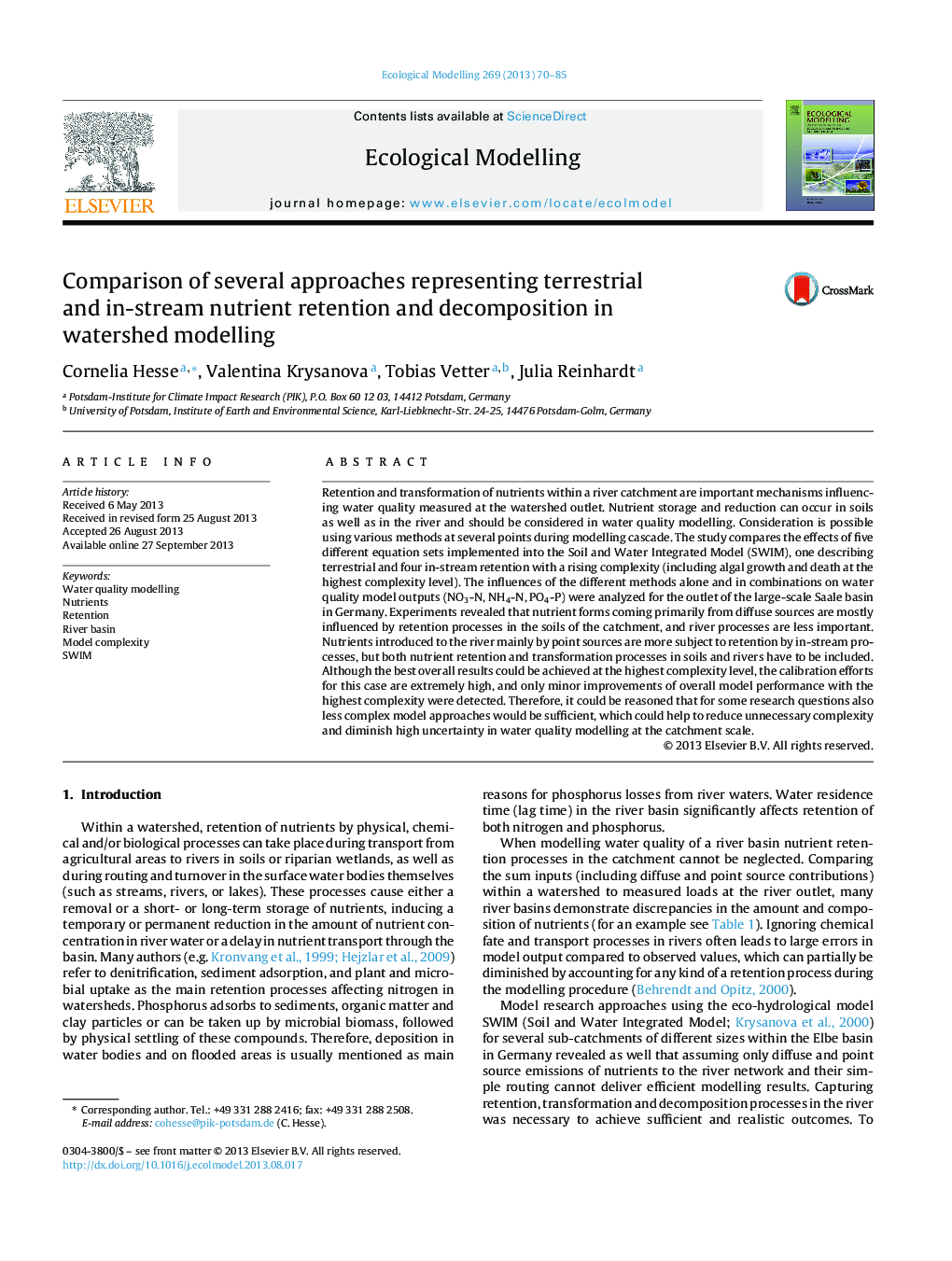| کد مقاله | کد نشریه | سال انتشار | مقاله انگلیسی | نسخه تمام متن |
|---|---|---|---|---|
| 4376045 | 1617477 | 2013 | 16 صفحه PDF | دانلود رایگان |

• Nutrient retention cannot be neglected in eco-hydrological watershed modelling.
• Nutrients coming from diffuse sources do not need in-stream river processes.
• Retention in soils and rivers is needed to well capture all nutrient concentrations.
• Most complex model approach for river processes delivers best seasonal dynamics.
• High complexity requires high calibration effort but is not necessary in all cases.
Retention and transformation of nutrients within a river catchment are important mechanisms influencing water quality measured at the watershed outlet. Nutrient storage and reduction can occur in soils as well as in the river and should be considered in water quality modelling. Consideration is possible using various methods at several points during modelling cascade. The study compares the effects of five different equation sets implemented into the Soil and Water Integrated Model (SWIM), one describing terrestrial and four in-stream retention with a rising complexity (including algal growth and death at the highest complexity level). The influences of the different methods alone and in combinations on water quality model outputs (NO3-N, NH4-N, PO4-P) were analyzed for the outlet of the large-scale Saale basin in Germany. Experiments revealed that nutrient forms coming primarily from diffuse sources are mostly influenced by retention processes in the soils of the catchment, and river processes are less important. Nutrients introduced to the river mainly by point sources are more subject to retention by in-stream processes, but both nutrient retention and transformation processes in soils and rivers have to be included. Although the best overall results could be achieved at the highest complexity level, the calibration efforts for this case are extremely high, and only minor improvements of overall model performance with the highest complexity were detected. Therefore, it could be reasoned that for some research questions also less complex model approaches would be sufficient, which could help to reduce unnecessary complexity and diminish high uncertainty in water quality modelling at the catchment scale.
Journal: Ecological Modelling - Volume 269, 10 November 2013, Pages 70–85